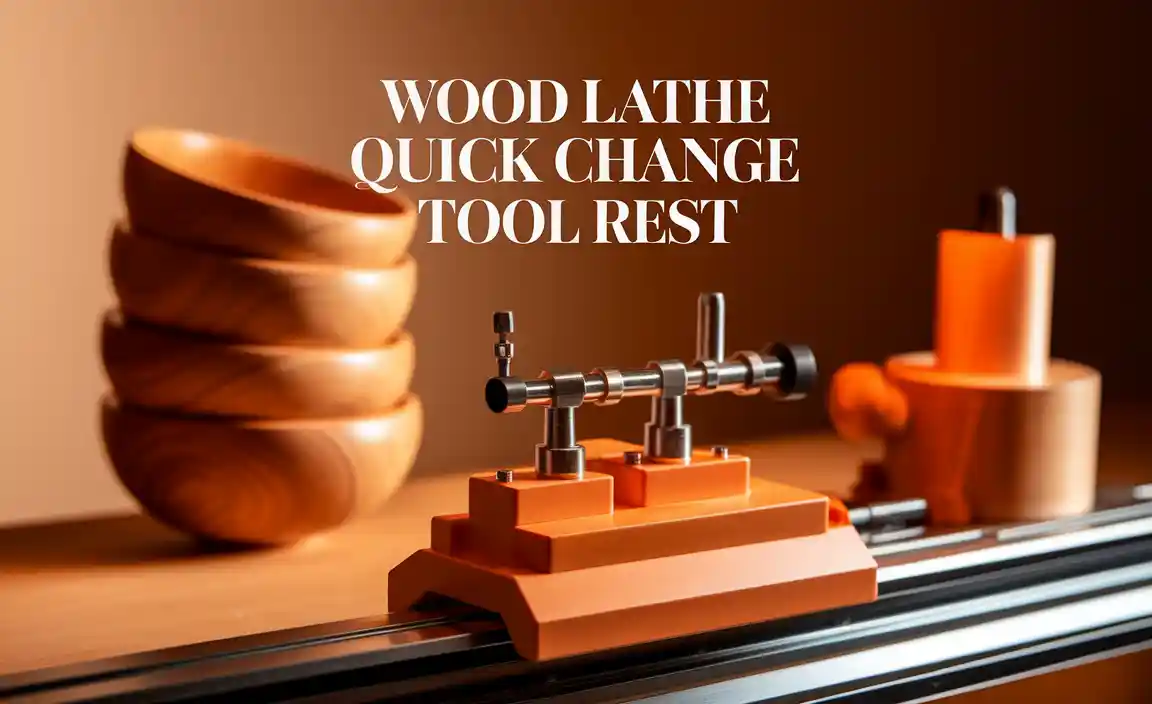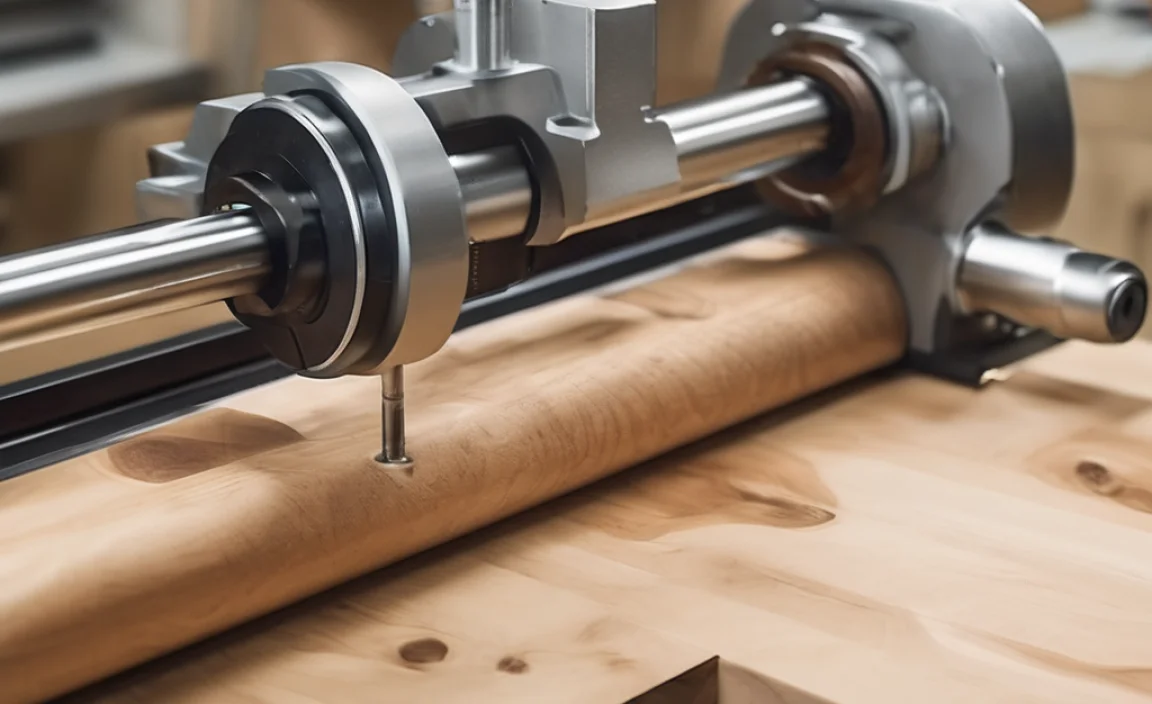A carbide end mill is a fantastic choice for cutting tool steel, offering superior hardness and heat resistance that allows for faster, more precise machining compared to traditional high-speed steel options. This makes tough materials like D2 steel much easier to work with, even for beginners.
Working with tool steel can often feel like a daunting task, especially when you’re just starting out with your metal lathe or milling machine. These steels are made to be hard and durable, which is great for making tools, but not so great when you need to shape them accurately. You might have struggled with tools wearing out too quickly or cutting inconsistently. This is where a specific type of cutting tool, the carbide end mill, shines. It’s designed to tackle these tough materials head-on, making your machining projects smoother and more successful. In this guide, we’ll explore why carbide end mills are so effective for tool steel and how you can use them confidently.
Why Carbide End Mills Are Your Best Friend for Tool Steel
Tool steels, like the popular D2, are known for their extreme hardness and wear resistance. This is exactly what makes them ideal for tools that see a lot of use, such as punches, dies, and high-quality cutting implements. However, this very hardness presents a significant challenge when you need to machine them. Traditional high-speed steel (HSS) end mills can struggle, often dulling quickly, overheating, and leaving a rough finish.
Carbide end mills, on the other hand, are made from cemented carbide, a composite material composed of a hard carbide powder (like tungsten carbide) pressed and sintered with a binder (usually cobalt). This composite structure gives carbide cutting tools exceptional hardness, stiffness, and resistance to high temperatures. For a beginner machinist, this translates into a tool that:
- Cuts harder materials like tool steel more efficiently.
- Maintains its sharp edge for much longer periods.
- Can handle higher cutting speeds and feed rates, reducing machining time.
- Produces a cleaner, more accurate finish on the workpiece.
- Is less prone to catastrophic failure, making it safer for less experienced users.
When we talk about specific applications, a carbide end mill 1/8 inch (or 6mm shank) can be particularly useful for intricate work or when dealing with smaller milling machines. A stub length version further increases rigidity, reducing vibration and improving accuracy, which is crucial when tackling a material as unforgiving as D2 tool steel, especially when aiming for tight tolerances. Understanding these characteristics is the first step to mastering tool steel machining.
Understanding Tool Steel and Its Machining Challenges
Tool steels are a class of carbon and alloy steels that are particularly well-suited for use as tools. They are valued for their ability to hold a sharp edge, resist wear, withstand impact, and resist softening at elevated temperatures. Common examples include:
- High-Carbon Tool Steels: Offer excellent hardness and wear resistance but can be brittle.
- Shock-Resisting Tool Steels: Designed to withstand impact and shock loads.
- Cold-Work Tool Steels: Such as D2, are known for their high hardness, excellent wear resistance, and good toughness for operations at or near room temperature.
- Hot-Work Tool Steels: Designed to retain hardness and strength at high temperatures.
Machining these steels presents unique hurdles for any machinist, but especially for beginners:
- Hardness: Their inherent hardness means they require more cutting force, which can lead to tool breakage or excessive wear on less robust tools.
- Toughness: While some are brittle, many tool steels are also very tough, meaning they resist fracture. This toughness can lead to chip welding (where the workpiece material sticks to the cutting edge) if not managed properly.
- Heat Generation: Machining creates friction, and tougher materials often generate more heat. High temperatures significantly reduce the lifespan of cutting tools and can even alter the temper of the workpiece material, making it harder to cut.
- Work Hardening: Some tool steels are prone to work hardening, meaning the surface layer becomes even harder when you try to cut it. This can lead to rapid tool dulling if the cutting process isn’t optimized.
These challenges highlight why a specialized tool like a carbide end mill is often the “genius” solution when working with materials like D2 tool steel. Its composition and design directly combat these issues, making the process manageable and effective.
The Magic of Carbide: Why It Excels
The superior performance of carbide end mills on tool steel comes down to its material properties and manufacturing. Let’s break down what makes carbide so special:
- Extreme Hardness: Carbide is significantly harder than HSS. This allows it to cut through very hard materials like tool steel without deforming or dulling as quickly. Think of it like using a diamond-tipped saw versus a regular saw on tempered glass – the diamond will cut cleanly where the steel saw might chip or fail.
- High Temperature Resistance: Machining generates heat. Carbide can withstand much higher temperatures than HSS before losing its hardness. This is critical for tool steel, as it allows for faster cutting speeds and deeper cuts without damaging the tool or the workpiece. The United States Department of Energy’s Advanced Manufacturing Office highlights the importance of advanced materials like carbides in improving manufacturing efficiency.
- Stiffness and Rigidity: Carbide is a stiffer material than HSS. This means it deflects less under cutting forces. For a beginner, this translates to more predictable and accurate cuts, reduced chatter (vibrations that ruin surface finish), and a lower risk of the end mill breaking.
- Wear Resistance: The combination of hardness and high-temperature resistance means carbide end mills simply last longer when cutting tough materials. This saves you money over time and reduces the frequency of tool changes, which is a significant advantage, especially on more complex parts.
When selecting a carbide end mill for tool steel, you might see descriptions like “fine grain” or specific carbide grades (e.g., YG-6X, K40). Generally, finer grain carbides offer better edge retention and a smoother finish, which is ideal for precision work. For tool steel, a multi-flute design (like 3 or 4 flutes) is often preferred for better chip evacuation and stability, though starting with a 2-flute can be beneficial for slots and plunge cuts in very hard materials.
Choosing the Right Carbide End Mill for Tool Steel
Not all carbide end mills are created equal, and choosing the right one for tool steel is crucial for success. Here are key features to consider:
Material and Coating
- Carbide Grade: For general tool steel machining, a fairly standard tungsten carbide grade works well. Finer grain carbides are better for finishing and for extremely hard steels.
- Coatings: While solid carbide is excellent, coatings can further enhance performance. For tool steel, coatings like TiCN (Titanium Carbonitride) or AlTiN (Aluminum Titanium Nitride) are highly beneficial. These coatings add extra hardness, reduce friction, and improve heat resistance, giving your end mill an even longer life and better performance.
- Uncoated: Uncoated carbide is still very effective and often more affordable. It’s a great starting point if you’re new to this, but may require more careful control of cutting parameters to prevent overheating.
Geometry and Design
- Number of Flutes:
- 2 Flutes: Excellent for slotting and ramping operations. They provide more space for chip evacuation, which is critical when machining sticky materials like tool steel.
- 3 Flutes: A good balance between chip evacuation and rigidity. Can be used for slotting and general milling.
- 4+ Flutes: Ideal for general peripheral milling and finishing. They offer greater stability and a smoother finish but can struggle with chip evacuation in deep pockets or sticky materials if not run with appropriate speeds/feeds. For tool steel, 2 or 3 flutes are often recommended for initial cuts.
- End Type:
- Square End: The most common type, used for creating flat surfaces, shoulders, and pockets.
- Ball Nose: Creates rounded profiles and can be used for 3D contouring.
- Corner Radius: Offers a slight radius at the corner of a square end mill, which adds some strength to the cutting edge and can help create a small fillet, preventing stress concentration. This is often a good compromise for tool steel.
- Shank Type: Look for end mills with a Weldon flat (a flattened section on the shank) if your machine’s collet or holder supports it. This prevents the end mill from slipping under heavy cutting loads. A standard cylindrical shank is also common.
- Length:
- Standard Length: Good for general machining.
- Stub Length: Shorter overall length with a shorter flute length. This is excellent for machining tough materials like tool steel because it minimizes deflection and vibration, leading to increased rigidity and accuracy. A stub length carbide end mill 1/8 inch 6mm shank is a great choice for smaller machines or intricate tasks.
Specifics for D2 Tool Steel
When targeting D2 tool steel, especially for projects requiring tight tolerances, consider these points:
- Rigidity is Key: Opt for end mills with shorter flute lengths or stub lengths. A 1/8 inch (6mm) shank is often suitable for smaller CNC machines or manual milling machines where rigidity is paramount.
- Coolant/Lubrication: D2 can be abrasive and gummy. Proper lubrication (cutting fluid or mist coolant) is essential to keep the tool cool, flush chips away, and prevent galling.
- Chip Evacuation: Even with a stub length, ensure your feed rates and speeds are set to effectively clear chips. 2-flute or 3-flute end mills are often preferred for milling slots or pockets in D2.
- Coatings: A TiCN or AlTiN coated end mill will provide the best performance and longevity on D2.
Setting Up Your Machine for Carbide End Milling
Successfully using a carbide end mill on tool steel involves more than just the tool itself. Your machine setup and cutting parameters play a huge role. Here’s a breakdown:
Machine Considerations
- Rigidity: The milling machine itself needs to be rigid. Older or lighter machines might flex excessively, leading to chatter and poor results with hard materials. Ensure gibs are properly adjusted and the machine is well-maintained.
- Spindle Speed (RPM): Carbide tools generally perform best at higher spindle speeds than HSS tools. However, for very hard materials like D2 and smaller end mills (like a 1/8 inch), you might need to balance RPM with feed rate due to machine limitations or the risk of overheating.
- Spindle Taper and Collet: Use a high-quality collet system (like ER collets) to ensure the end mill is held securely and runs true. A worn or runout collet can lead to missed cuts and tool breakage.
Workholding
Securely holding your workpiece is paramount. Tool steel requires significant cutting forces, so your workholding must be robust:
- Vise: A good quality, rigid vise is essential. Ensure the jaws are clean and that the vise is securely mounted to the machine table. Use soft jaws if you need to protect the surface of your workpiece.
- Clamping: For larger or irregularly shaped pieces, use clamps, T-nuts, and studs to firmly attach the workpiece to the machine table. Ensure clamps are positioned to resist cutting forces without obstructing the tool path.
- Alignment: Make sure your workpiece is square and accurately positioned relative to the machine axes.
Coolant and Lubrication
Proper coolant application is non-negotiable when milling tool steel with carbide:
- Flood Coolant: The most effective method, providing maximum cooling and chip flushing.
- Mist Coolant: A good alternative for smaller machines or when flood coolant is impractical. It delivers a fine spray of coolant and air.
- Cutting Fluid/Paste: For manual machining or very tough operations, a heavy-duty cutting fluid or paste can be applied directly to the cutting zone.
- Air Blast: Sometimes, a strong blast of air can help clear chips, but it doesn’t provide the cooling benefits of liquid coolant.
Using the correct coolant not only extends tool life but also improves surface finish by preventing chip welding. For D2 and similar steels, sulfur-free or synthetic coolants are often recommended.
Setting Up Speeds and Feeds for Carbide End Mills
This is often the trickiest part for beginners, but getting it right makes all the difference. Speeds and feeds determine how fast the tool rotates (RPM) and how fast it moves into the material (feed rate). For carbide end mills on tool steel, you’re aiming for efficiency without overloading the tool or machine.
Here’s a general approach:
Starting Points
Manufacturers of end mills often provide recommended Speeds and Feeds (S&F) charts. These are excellent starting points. You’ll typically find values based on the diameter of the end mill and the material being cut. For tool steels like D2, these values will be lower than for softer metals like aluminum.
A common starting point for a 1/8 inch (6mm) carbide end mill in D2 tool steel might look something like this:
- Surface Speed (SFM): Often in the range of 150-300 SFM (Surface Feet per Minute).
- Feed per Tooth (IPT): Crucial for chip load. For a small diameter like 1/8 inch, this will be very small. Start with something like 0.0005 to 0.001 inches per tooth.
Calculating RPM
You can convert Surface Speed to Spindle Speed (RPM) using this formula:
RPM = (SFM 3.24) / Diameter (inches)
Or for metric:
RPM = (Surface Speed m/min 1000) / (π Diameter mm)
Let’s say you want to achieve 200 SFM with a 1/8 inch (0.125 inch) end mill:
RPM = (200 3.24) / 0.125 = 648 / 0.125 = 5184 RPM
This is a theoretical ideal. You may need to adjust based on your machine’s capabilities.
Calculating Feed Rate
Once you have your RPM and know the number of flutes (let’s say 2 flutes) and your desired Feed per Tooth (IPT), you can calculate the Machine Feed Rate (IPM – Inches per Minute):
Feed Rate (IPM) = RPM Number of Flutes IPT
Using the example above with 0.0008 IPT:
Feed Rate = 5184 RPM 2 flutes 0.0008 IPT = 8.29 IPM
Example Speeds and Feeds for 1/8″ Carbide End Mill in D2 Tool Steel
This is a starting point only. Always listen to your machine and the sound of the cut.
| Parameter | 2 Flute End Mill | 3 Flute End Mill | Notes |
|---|---|---|---|
| Material | D2 Tool Steel (Hardened approx. 58-60 HRC) | Requires good rigidity and lubrication. | |
| End Mill Diameter | 1/8″ (6mm) | Stub length recommended for rigidity. | |
| Coating | TiCN or AlTiN recommended | Improves performance and tool life. | |
| Surface Speed (SFM) | 150-200 SFM | 150-200 SFM | Adjust based on cooling. |
| Calculated RPM (for 1/8″ dia) | ~3840 – 5184 RPM | ~3840 – 5184 RPM | Based on 150-200 SFM. |
| Feed Per Tooth (IPT) | 0.0005″ – 0.001″ | 0.0005″ – 0.0009″ | Start low and increase if chips are good. |





